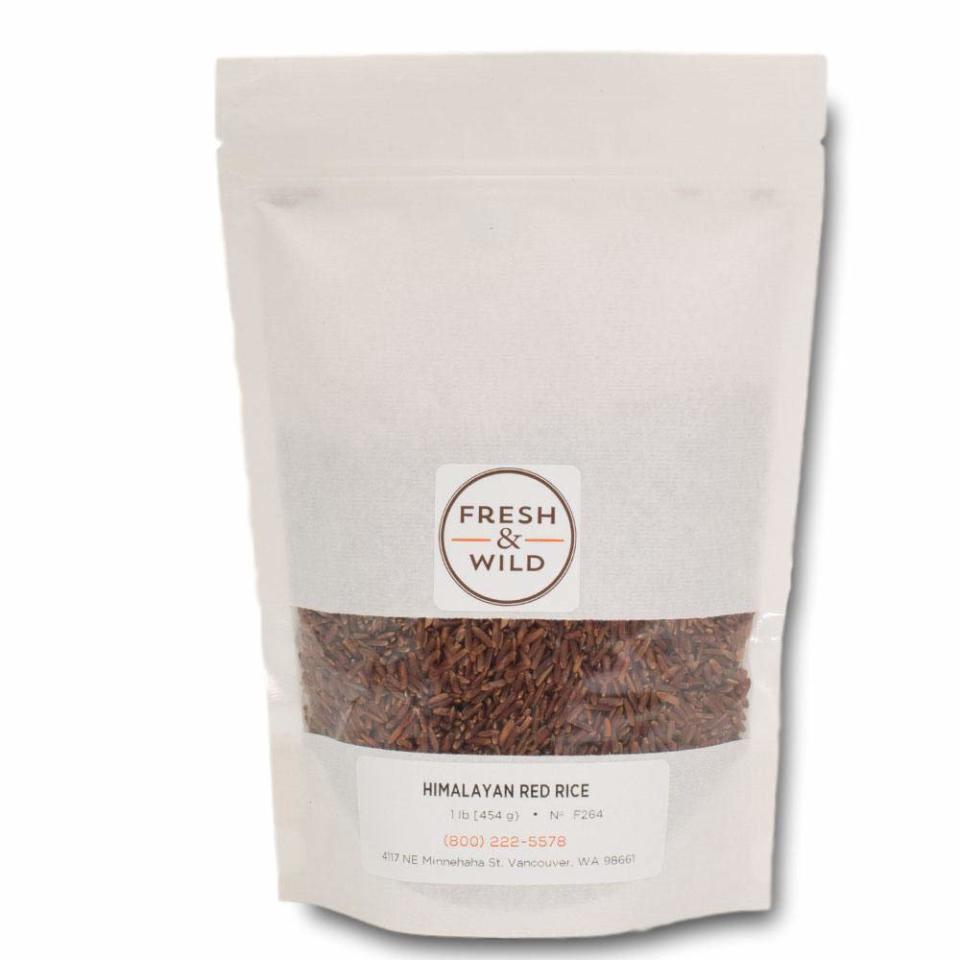5 Types of Rice to Expand Your Grain Horizons
To me, a well-stocked pantry is one that’s full of rice. Having a bag or two on deck is like a culinary security blanket; depending on the type you choose (and there are over 40,000 types of rice!), the reliable grain can be whatever you need it to be—a sauce soaker-upper, last-minute meal, drunken midnight snack, or leisurely weekend brunch.
You’re likely familiar with a few classic rice varieties, like fragrant basmati, tender jasmine, or short, sticky sushi rice. Maybe you’re a risotto fan, so arborio or carnaroli rice—starchy strains that cook into a creamy consistency—are at home on your shelves. But less common types of rice are worth seeking out for the distinctive flavors, textures, and colors they can bring to a dish.
Read on for some rice inspiration, as well as a few ways to use each variety. As with any culinary swap, check your rice for doneness as you go; using one of the types below may require a bit more liquid, or a longer cook time, than the original recipe states.
Bomba rice
Also called Valencia rice due to its region of origin, bomba is a Spanish variety used to make paella. It’s uniquely shaped—almost totally round—and unlike other rice types, expands width-wise rather than lengthwise, so it stays short but fat after cooking.
Bomba rice can absorb three times its volume without bursting (for reference, regular white rice can absorb just twice its volume). This means that bomba is nearly impossible to overcook, and that it keeps its shape as distinct grains, rather than mushing together. It shines in dishes that make use of its chewy exterior but tender interior.
How to use it: Aside from its intended use in paella, bomba rice makes a great substitution for other short-grain rices in one-pan dishes, like this skillet chicken and rice. You can also use it to make risotto, though it will create a slightly less creamy result. Or try it as the base of a salmon rice bowl with broth.
Santo Tomas Bomba Rice, 2.2 lbs.
$13.00, Amazon
Camargue
Camargue, or French Red rice, is also named for its home region, the wetlands between Montpellier and Marseilles. It’s a short-grain variety with its hull, or outer bran, still intact. It's nutty in flavor and deep brick red in color, even after cooking. Because of its similarly earthy and hearty quality, Camargue makes for a good substitute for brown rice in almost every application, and it’s very good at soaking up sauces and broth.
How to use it: The hearty flavor of Camargue rice makes it a great accompaniment to chicken or pork. Use it in a pilaf, rice salad, or grain bowl soup.
Woodland Foods Camargue Red Rice, 12 ounces
$14.00, Amazon
Black rice
Black rice is whole grain, meaning the hull has not been removed. As a result, it has a uniquely chewy texture and takes longer to cook than most other other rice varieties. The hull has high levels of anthocyanins, which pigment plants (such as berries) red, purple, blue, or black. Most black rice looks true black or blue-black when raw, but deep purple once cooked.
Like “brown rice,” which can be short-, long-, or medium-grained, black rice is an umbrella term for a few different varieties, which include glutinous and non-glutinous strains. Non-glutinous black rice makes for a striking, chewy substitution anywhere you’d use non-sticky white rice (though it doesn't absorb sauces quite as well). Glutinous (or “sweet”) black rice is typically served as dessert, in puddings or topped with sweetened condensed milk.
How to use it: Use non-glutinous varieties of black rice to add a chewy texture to your next stir fry or rice salad, or double down on the dark color by pairing it with squid ink. Sticky black rice works well as the base of an overnight porridge, or in a traditional Thai dessert with mango.
Rebirth Rice Thai Heirloom Black Rice, 4 lbs.
$17.00, Amazon
Dragonfly Sweet Black Rice, 5 lbs.
$22.00, Amazon
Northern wild rice
Wild rice is technically the seed from an aquatic grass and not a rice at all, but it cooks and eats similarly to rice and can be used in many of the same ways. Long and skinny, dark in color and firm in texture, wild rice works particularly well in salads and as a stuffing, where it can stand up to assertive dressings and long cook times.
Three species of wild rice are native to North America (it’s the only “rice” variety that is), including Northern wild rice, which grows in the Great Lakes region. It has a black outer hull and an intensely earthy and nutty flavor.
How to use it: Use Northern wild rice as the base of your next salad, as a stuffing component in vegetarian stuffed squash, or as a holiday side dish.
Thousand Lakes Minnesota Wild Rice, 15 ounces
$15.00, Amazon
Bhutanese red rice
A medium-grain rice grown in the Himalayas, Bhutanese red rice is a red version of japonica, a sticky white rice. It is semi-milled, meaning that some of the bran remains on the outside of each grain; as a result, when cooked, Bhutanese red rice is reddish-brown in some spots (where the hull is still intact) and pale pink in others. Nutty in flavor and tender in texture, it’s a good substitute for brown or jasmine rice.
How to use it: Serve Bhutanese brown rice alongside a flavorful main like turmeric chicken or spicy citrus shrimp. You can also use it as the grain in this pickled rice tabbouleh for a punchy side.
Fresh & Wild Himalayan Red Rice, 1 lb.
$16.00, Amazon
Wondering how to cook your rice? Check out our rice cooker product review, and this one-button rice-cooking wonder.
Originally Appeared on Epicurious







